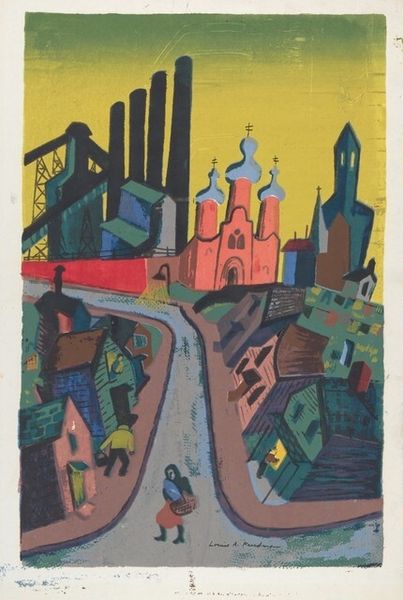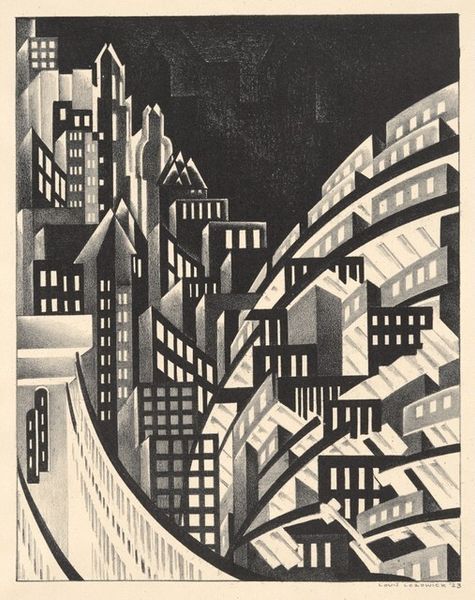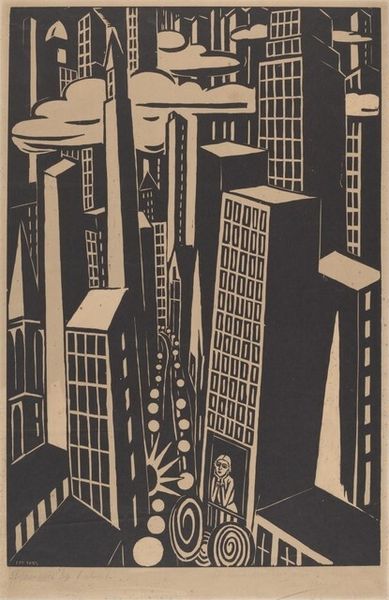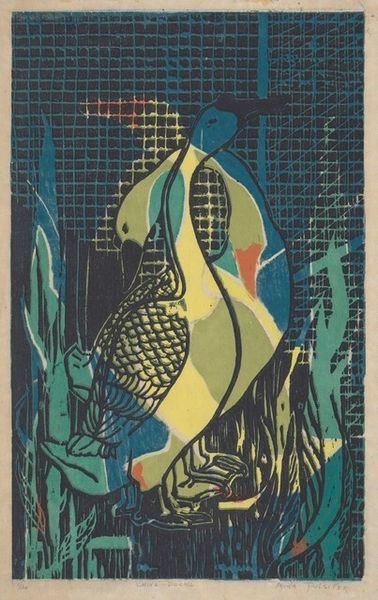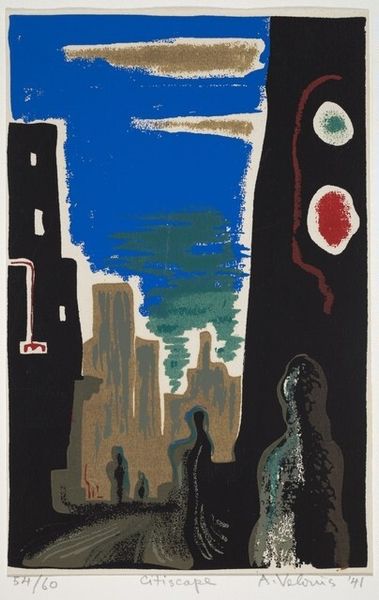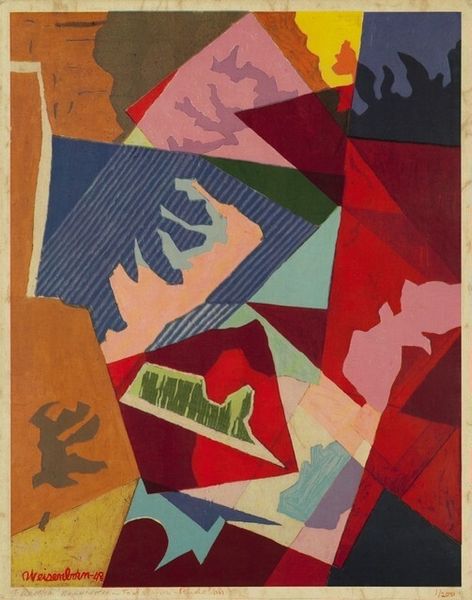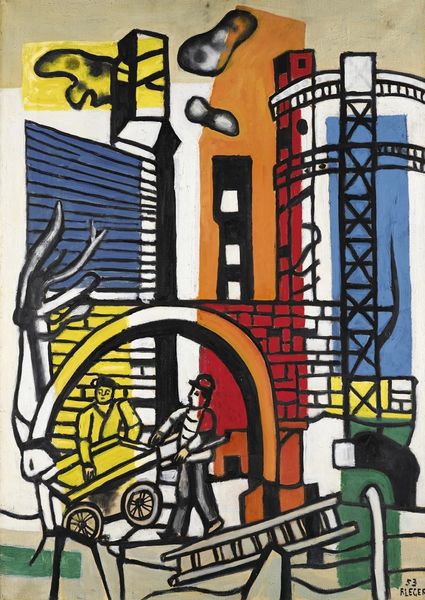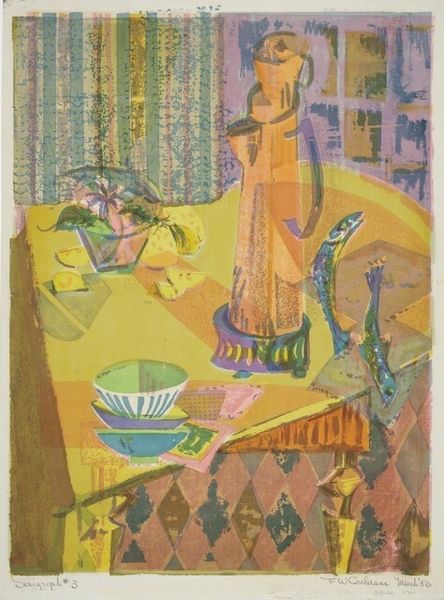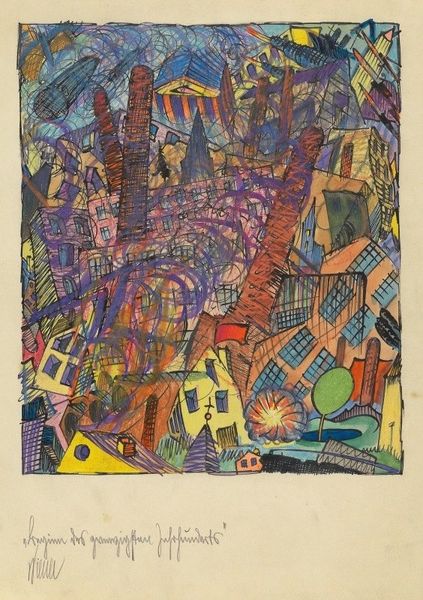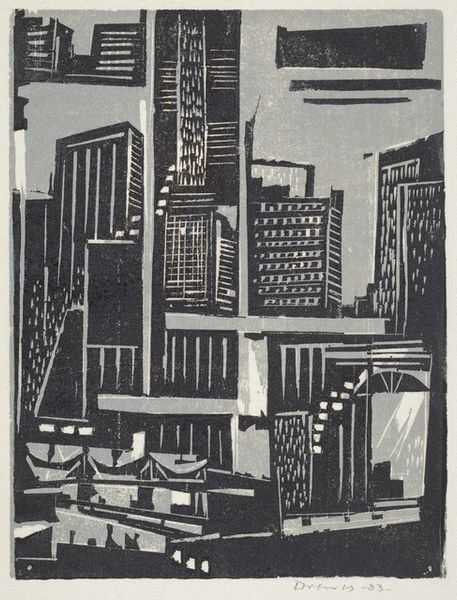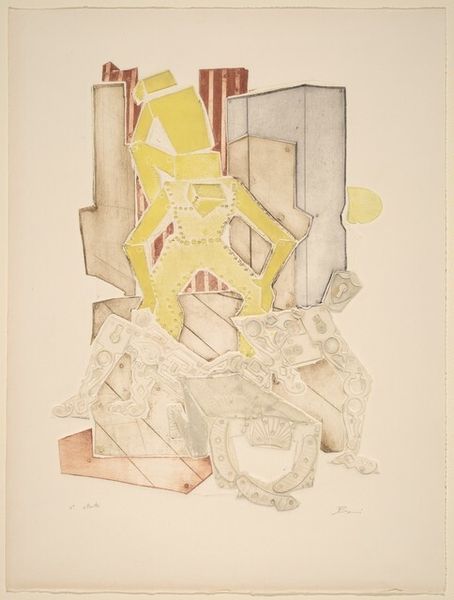
tempera, painting, print
#
tempera
#
painting
# print
#
caricature
#
caricature
#
figuration
#
naive art
#
cityscape
#
realism
Dimensions: Image/sheet: 560 x 380 mm
Copyright: National Gallery of Art: CC0 1.0
Editor: Louise Arnstein Freedman’s "The Spotter," made with tempera paint, presents a skewed, almost caricatured cityscape from 1944. It feels cramped, a little anxious. What's your take on the piece? Curator: This image is intriguing precisely because of the choices made in its construction. Look at the tempera; it gives a matte finish, emphasizing the surface as a worked, constructed object. And "The Spotter," observing what exactly? I wonder what material limitations the artist faced, or even embraced? What labor went into each print? Editor: The city almost feels oppressive. And you’re right, "spotting" could imply surveillance, adding a layer of anxiety to it. Do you think Freedman was consciously making a statement about urban life or the war? Curator: We can't ignore the date, 1944. While seemingly a cityscape, the artist uses a cheap material like tempera on paper to reflect the resourcefulness necessitated during wartime restrictions. Furthermore, I’d like to know how accessible this image was through printing technology; what was its mode of circulation? Was Freedman questioning social structures through material choice and mass distribution? Editor: So, you see the materiality of the artwork – the conscious, or perhaps even unconscious, choices of materials and means of production – as a key element for interpreting the image itself. Curator: Absolutely. By focusing on the materials and method of production we avoid reducing the image to simply aesthetic appeal, and engage in dialogue regarding labor and availability during times of social strife, like war. It shifts our understanding considerably, don’t you think? Editor: I see your point. The economic context adds another dimension that I hadn’t initially considered. Now I see how examining the “how” helps decipher the “why.” Curator: Exactly, a dialogue across disciplines enhances the image itself, as well as our understanding of it.
Comments
No comments
Be the first to comment and join the conversation on the ultimate creative platform.
